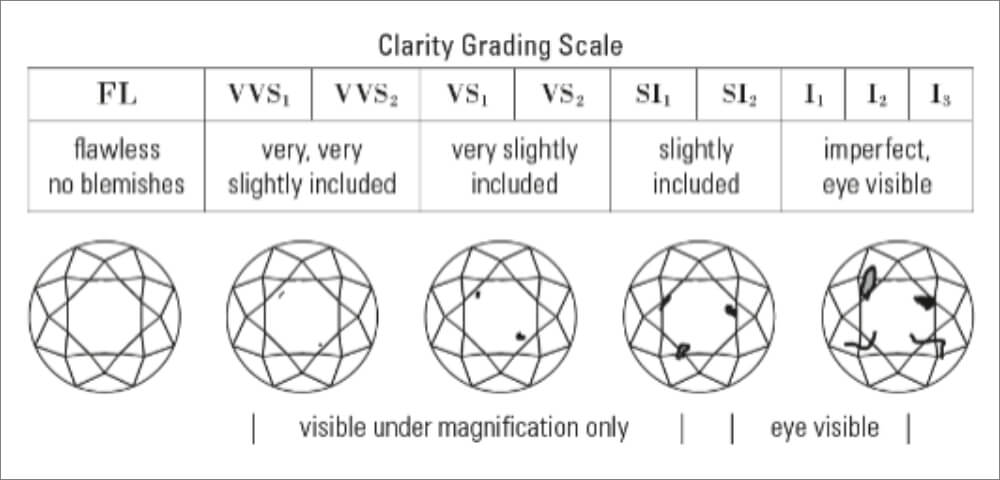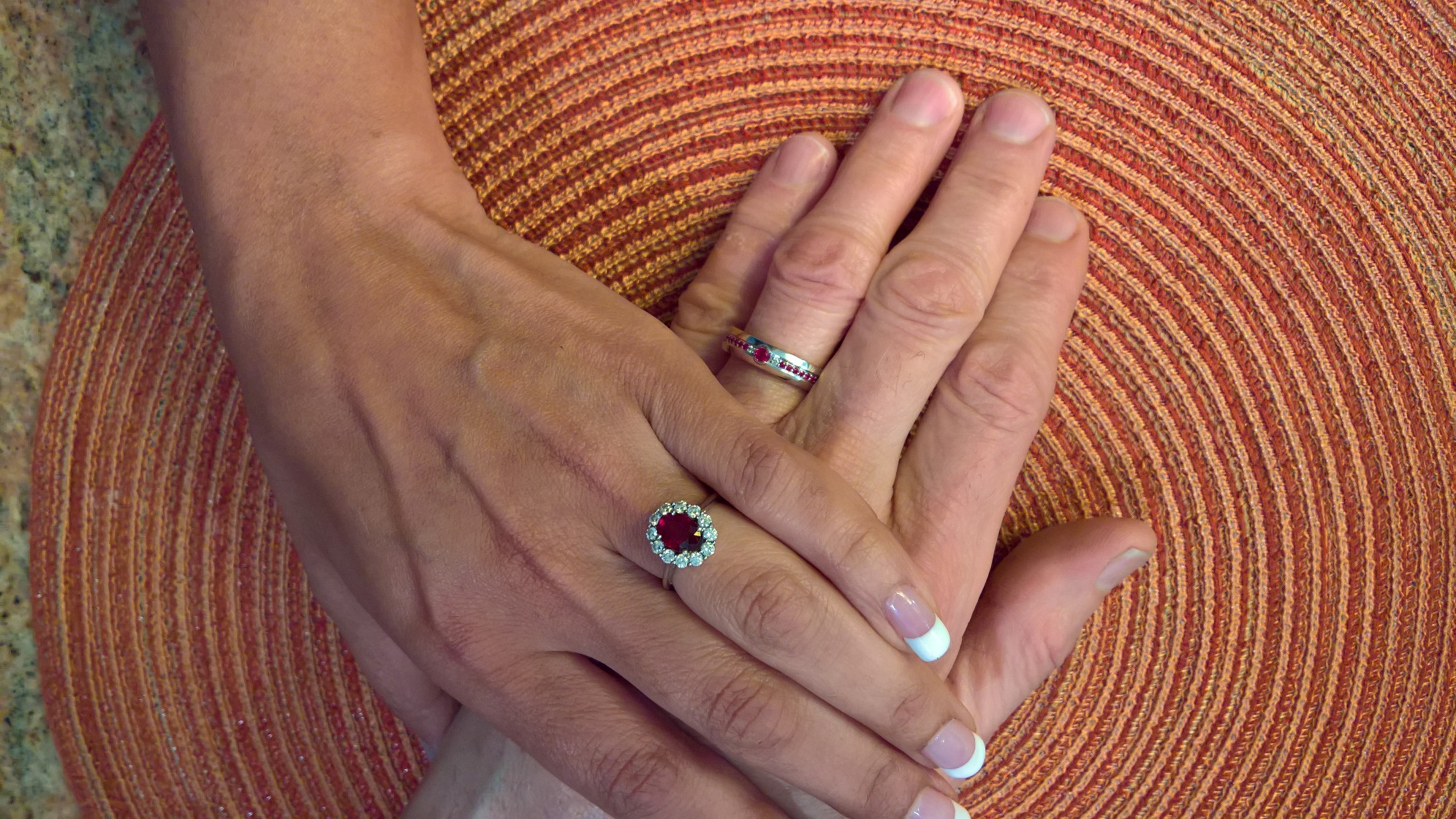
The 4Cs of Diamonds
Color Grade:
With the exception of fancy-colored diamonds, the most valuable diamonds are those with the least color. Although many people think of gem quality diamonds as colorless, completely colorless diamonds are very rare.
The diamond color scale ranges from D (colorless) to Z (light yellow or brown).
A diamond’s color is determined by a manual process of comparing the diamond to a master set. Each letter grade represents a range of color and is a measurement of how noticeable a color is. When diamonds are formed with traces of other minerals, rare and beautiful colors can result. These “fancy” colors range from blue and brilliant yellow to red, brown, pale green, pink, and violet. Because of their rarity, colored diamonds are highly desirable and typically more valuable.

Clarity:
A term used to describe the absence or presence of internal or external flaws in a gemstone.
In-depth description:
Tiny surface blemishes or internal inclusions, even those seen only under magnification, can alter the brilliance of the diamond and thus affect its value. Clarity levels begin with flawless (FL, IF), followed by very, very slight (VVS1, VVS2), very slight (VS1, VS2), slightly included (SI1, SI2), and included (I1, I2, and I3)

Cut:
While cut does include shape, in terms of the 4 Cs it refers to the proportions of the cut. A diamond’s cut grade is an objective measure of a diamond’s light performance, or the amount of sparkle a diamond has.
A diamond’s overall proportions, as well as the size and position of its facets, make up the cut. The consistency and balance of these can greatly affect how the stone captures light and reflects it back to the eye. When a diamond is cut with the proper proportions, light enters the diamond and is returned through the top of the diamond. If a diamond is too shallow, light will escape from the bottom of the stone. If it is cut too deep, light will escape out the sides.
Studies have been conducted to find the optimum proportions of a diamond’s cut so that it has the greatest amount of sparkle. If its cut falls within these parameters, it is considered an ideal cut. Diamonds with fine proportions, symmetry and polish optimize their interaction with light and have increased brilliance, dispersion, and s cintillation.

Carat:
Carat refers to a diamond’s weight. One carat, the traditional unit of measurement for diamonds, is approximately 0.2 grams (200 milligrams).
You may also hear the weight of a diamond referred to in points. One carat is equivalent to 100 points, so a 75-point diamond is equal to 0.75 carats. Because they are rare, larger diamonds have greater value per carat, so the price of a diamond rises exponentially to its size.
- 1 carat = 31⁄16 grains Troy
- 1 carat = .007 oz. Avoir
- 1 carat = 1⁄5 gram
The carat is further divided into points for simple measurement:
- 1 carat = 100 points
- 1⁄2 carat = 50 points
- 1⁄4 carat = 25 points
- 1⁄8 carat = 12 1⁄2 points











